Garden Landscape Plants | Basic Knowledge

Landscape greening is a supporting profession for real estate projects, but it is also a very important profession. The quality of landscape greening design and construction is directly related to the living environment, living comfort, and quality of life of the owners. Even in the project sales stage, the effect of landscape display plays a certain role in the customer's psychological desire.
1. Introduction to the classification of greening seedlings
1. Introduction to the levels of plant science classification
Attribute classification: trees, shrubs (spherical, ground cover), grasses, vines, bamboos, aquatic plants.
Ornamental classification: viewing the shape, viewing the branches, viewing the flowers, viewing the leaves, and viewing the fruits.
Classification of plant growth characteristics: evergreen plants, deciduous plants Classification of plant habits: light-loving, semi-shade, shade-tolerant.
The basic levels are: kingdom, phylum, class, order, family, genus, species
For example: camphor
Chinese name: Cinnamomum camphora Latin name: Cinnamomum camphora (L.) Presl.
Other names: camphor, fragrant camphor, fragrant camphor, oily camphor, camphor wood, black camphor, Yaoren firewood, camphor, stinking camphor Kingdom: Plant Kingdom
Phylum: Angiosperms
Class: Dicots
Subclass: Prototegumenta
Eye: Tobacco eye
Family: Lauraceae
Subfamily: Lauraceae
Genus: Cinnamomum
Species:Cinnamomum camphora
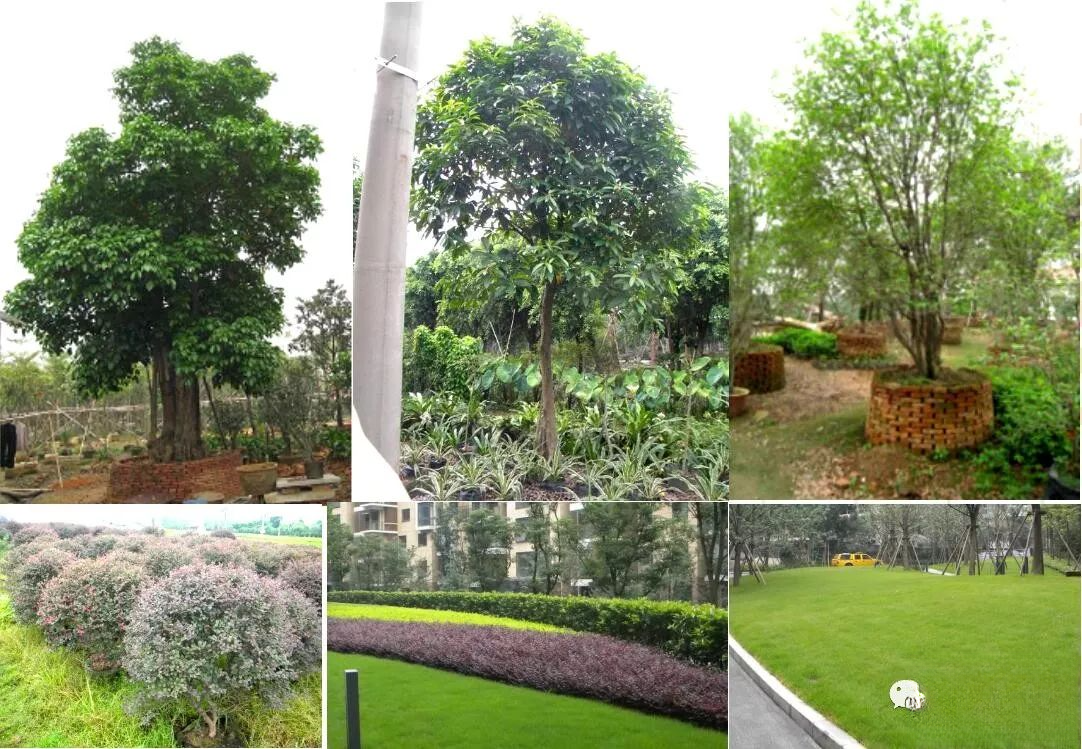
2. Basic classification of plants in greening design
1) Attribute classification: trees, shrubs (spherical, ground cover), grasses, vines, bamboos, aquatic plants
❶ Arbor: refers to a tall tree with an independent trunk from the roots, and a clear distinction between the trunk and the crown. A woody plant with an upright trunk and a height of usually 6 meters to tens of meters is called an arbor. For example: camphor tree.
❷Shrubs: refers to trees that have no obvious trunk and grow in clusters, such as osmanthus.
❸Grass: generally refers to herbaceous plants. Currently, Taiwan grass, Lanyin series, etc. are commonly used.
❹Lane: A vine plant is a plant with a slender stem and a slender plant body that cannot stand upright and can only cling to other plants or supports (such as trees, walls, etc.) and entwine or climb upwards. Ivy, firecracker plant.
❺ Bamboo: Bamboo plants belong to the subfamily Bambusoideae of the Poaceae family. The subfamily Bambusoideae is a type of plant with strong regenerative properties. It is an important gardening material and an important element in the construction of gardens.
❻Aquatic: Aquatic plants refer to those plants that can live normally in water for a long time. Lotus, windmill grass.
2) Ornamental categories: viewing the shape, viewing the branches, viewing the flowers, viewing the leaves, and viewing the fruits
❶Appearance: The shape of a plant is one of the basic factors in garden landscape design. It refers to the appearance of an adult plant under normal growth conditions. The shapes of garden plants can usually be divided into 14 categories. For example, oval: Osmanthus fragrans
❷ Observe the branches: mainly observe the color of the trees, branches and bark. The red branches are apricots; the white branches are white pine;
❸ Flower viewing: Trees with unique flower shape, color, quantity and fragrance, among which flower color is more important.
❹ Ornamental fruit: refers to trees with fruits of odd shapes, bright colors, long-lasting appearance, and no environmental pollution. According to their ornamental characteristics, they can be divided into the following three categories: exotic fruits, colorful fruits, and multiple fruits.
3) Plant habit classification: evergreen plants, deciduous plants
❶ Evergreen plants: refers to perennial woody plants with green leaves all year round. The leaves of evergreen trees do not never fall off, but the lifespan of the leaves is longer than that of deciduous trees. For example, holly leaves can live for 1 to 3 years, pine leaves can live for 3 to 5 years, and Podocarpus leaves can live for 2 to 8 years. Evergreen trees grow new leaves every spring, and some old leaves fall off at the same time, but the stems remain green all year round, so they are called evergreen trees.
❷Deciduous plants: This is a common term in botany. In contrast to evergreen plants, there is a period of time in a year when the leaves will fall off completely, and the branches will become bare without leaves. The reasons for the occurrence of deciduous plants are obviously related to the season and climate. Since the temperature is generally lower in autumn and winter, the climate is also drier and prone to water shortage, the growth of plants stops, all leaves fall off, and new leaves grow again the following year. Except for species that grow in tropical and some temperate regions, which are mostly evergreen, the rest of the plants are deciduous or semi-deciduous. Semi-deciduous means that the plants are also affected by the climate in autumn and winter, resulting in slow growth, and some of their leaves fall off.
2. Brief introduction to key points of greening design
1. Design style: echoing the hardscape, with clear priorities
Before greening design, the design style and positioning of the project landscape should be clarified, and the expected design effect and functional requirements of each area and detail of the hardscape design should be clear, and they should be coordinated with the hardscape design. Greening design should have a clear distinction between primary and secondary landscape nodes, and highlight the changes in the levels of the overall landscape effect of the project and the changes in the primary and secondary spaces through changes in the tree species, specifications, and matching forms of seedlings.

2. Arrangement method: natural style (single planting, cluster planting), regular style (array style, linear style)
❶ Solitary Plant
Role in Garden Landscape Design When a superior tree in a garden is planted alone, it is called a solitary tree. A solitary tree is mainly used to provide shade and serve as the main scenery for viewing, as well as the background and side scenery of a building. Conditions that a solitary tree should have Solitary trees mainly show the individual beauty of the tree, and individual beauty must be emphasized when selecting tree species.
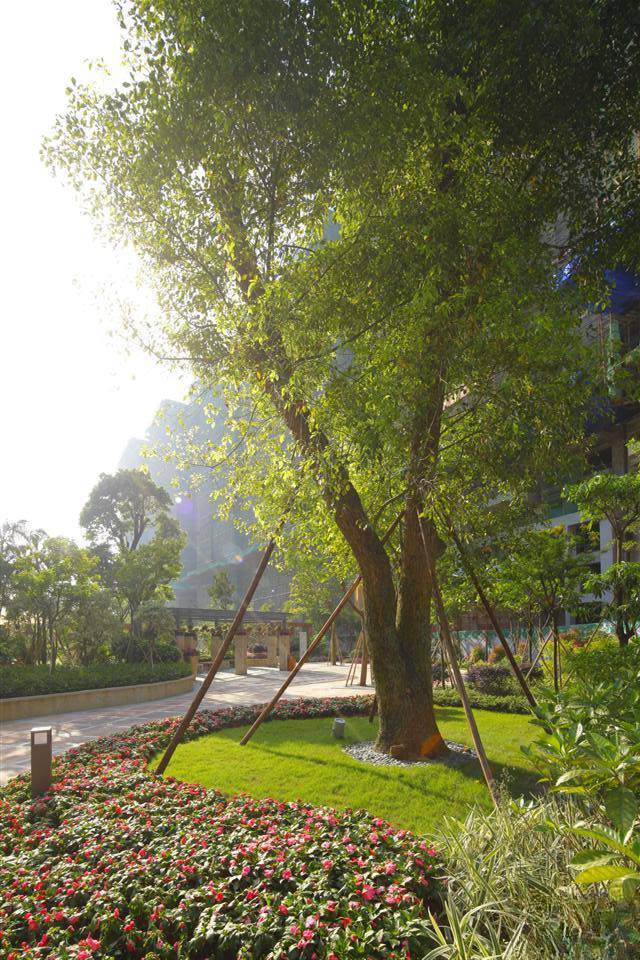
❷Cluster planting
It refers to a group of trees from one to more than ten trees, forming an overall structure. Cluster planting can form a very natural plant landscape, and it is an important means of using plants for garden landscaping. Generally, cluster planting can consist of up to 15 trees and shrubs of the same or multiple species of varying sizes.
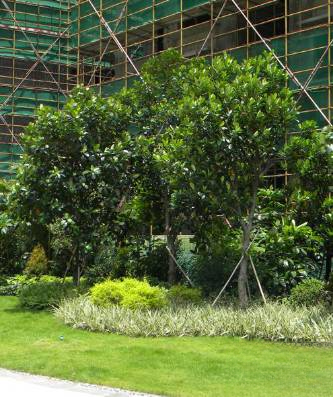
❸Regular (array, line)
The greening layout follows certain rules or regular forms, often using a single tree species, such as array form, symmetrical form, single line form, etc.
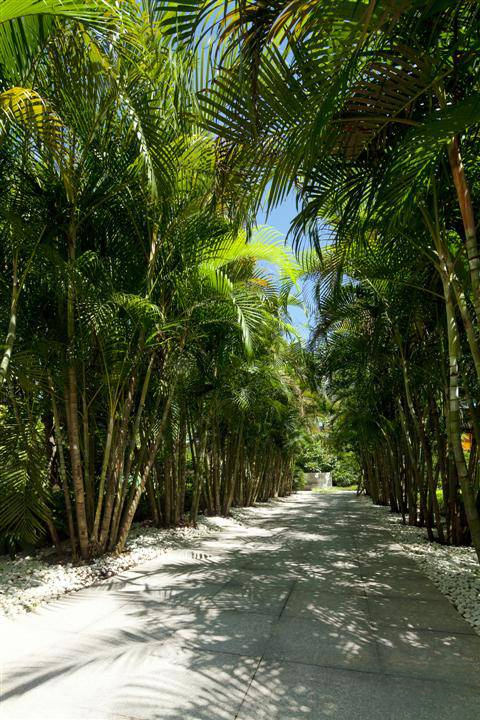
3. Plane layout matching: space enclosure, density variation
❶ Space enclosure
On the basis of the activity space of landscape hardscape design, the sense of enclosure of space is supplemented and highlighted to increase the privacy of space. Secondary space is created through the enclosure arrangement of greenery to enrich the spatial combination of the overall landscape design.
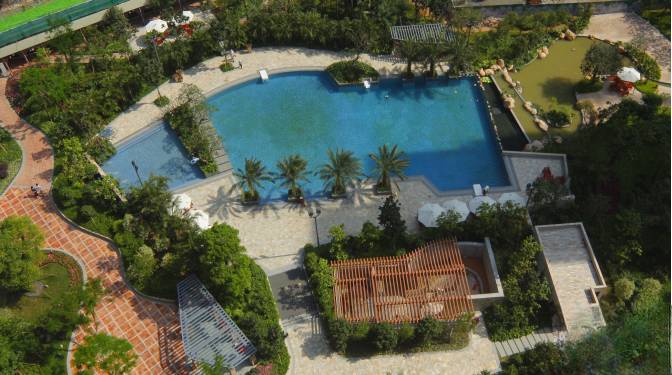
❷Density changes
The planar arrangement of seedlings should be sparse and dense, with obvious contrast, and avoid even distribution. And sparseness and density are not only reflected in the plane, but also in the vertical layer design. Sparseness should be transparent and have a wide view. Generally, large trees are combined with ground cover and turf, with no more than three vertical layers. Denseness should be airtight, with more than four vertical layers, including large trees, small trees, large shrubs, small shrubs, and ground cover.
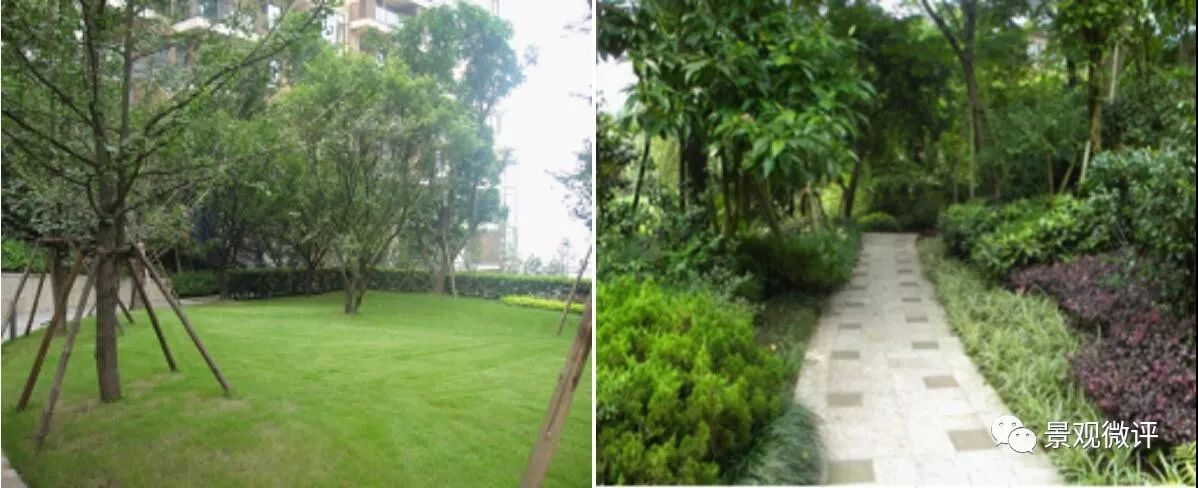
4. Vertical matching: layers, main landscape, and overall facade composition
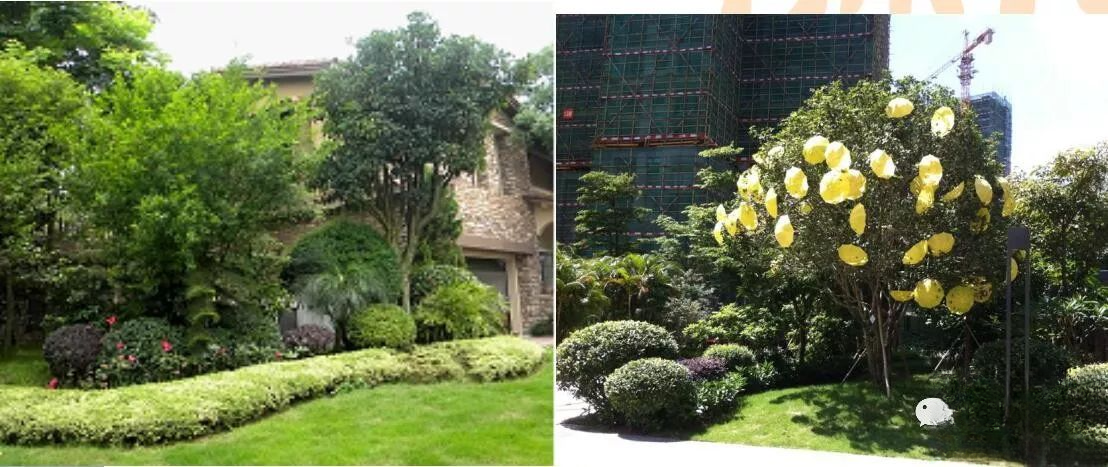
❶ Layered matching
Generally speaking, it is reflected by the combination of seedlings of different specifications and heights. It is divided into the following six levels: large trees (over 6 meters), trees (4-6 meters), large shrubs (2-4 meters), shrubs (0.8-2 meters), ground cover, and turf.
❷Main landscape view
When arranging the greening of a certain area or even each tree, it is necessary to consider and analyze the orientation, angle, and distance perception of the main viewing surface, and the determination of the viewing surface should be based mainly on human activity flow lines and rest space.
❸ Overall composition of the facade
On the basis of clarifying the above two points, the overall composition of the facade is very important for the overall effect within the visual range of people. The height, crown width and position relationship of each seedling should be considered from the perspective of overall visual perception.
5. Primary and secondary matching: main tree, background tree (background)
The greening design of each landscape node or an independent area should have a primary and secondary selection of seedlings. First, the main landscape tree should be identified, and its variety, specification, quantity and location should be determined according to the landscape effect that the design wants to express. After the main landscape tree is determined, the background tree should be arranged and designed. The background tree mainly serves to set off the main landscape, set off the atmosphere, and enrich the effect.

6. Tree species matching: regional theme, seasonal matching, color matching, floral fragrance application
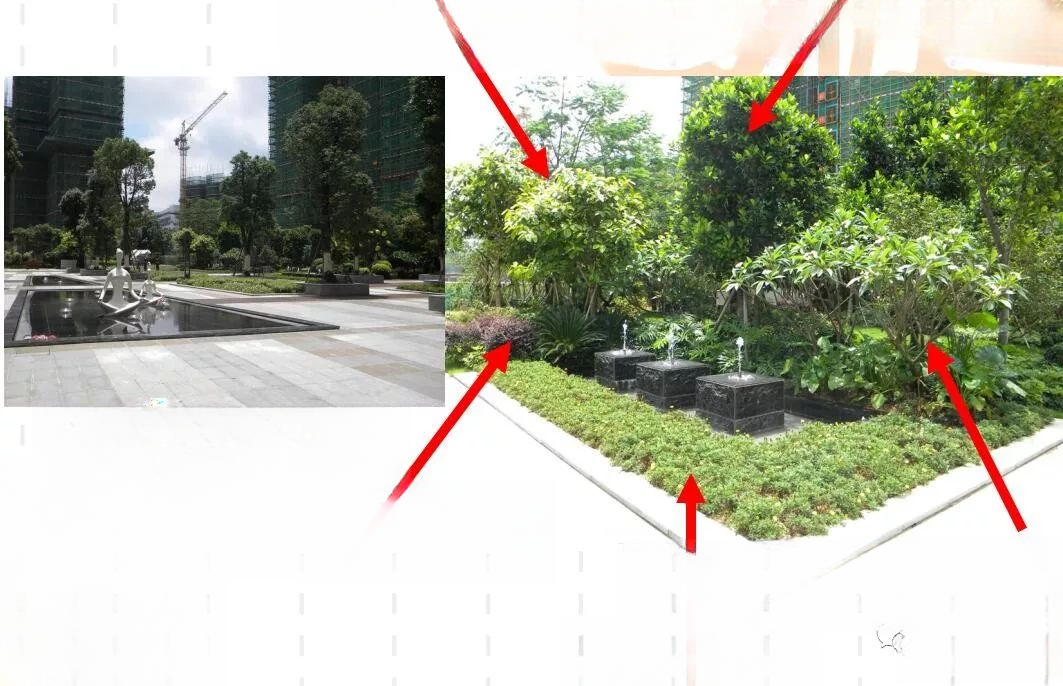
❶ Regional Theme
Each landscape node or independent greening area should have a clear greening matching theme. The number of seedling varieties should not be too many, and a certain number should be arranged in a concentrated manner to form a scale. If there are too many varieties and small quantities, it will feel messy and there will be no visual intersection.
❷Seasonal Matching
The selection and matching of tree species should reflect the changes of the four seasons and take into account the greening and ornamental effects of the four seasons. Generally, the ratio of evergreen and deciduous plants is between 7:3 and 6:4. The overall matching should be considered according to the best viewing period of the plants (flowering period, fruiting period, color change period, etc.), so that there are flowers in three seasons and new green in four seasons.
❸Color matching
Color changes are very important in the greening design of real estate projects. Color changes give people the most direct visual experience. When choosing tree species, the color matching should be fully considered. Generally, it is expressed through flower color, leaf color, etc. (Red Ficus microcarpa, Golden Banyan, Bright Leaf Cordyceps)
❹Floral fragrance application
Fragrant plants are an essential part of greening design. They change the single visual sensory experience of the landscape. The fragrance emitted by plants can make people's body and mind integrate into the landscape environment. (Osmanthus, white orchid, Michelia, Osmanthus fragrans, etc.)
7. Hardscape coordination: regional function coordination and effect coordination
8. Growth environment considerations: sunshine duration, soil cover thickness, soil quality, soil moisture, maintenance conditions, etc.
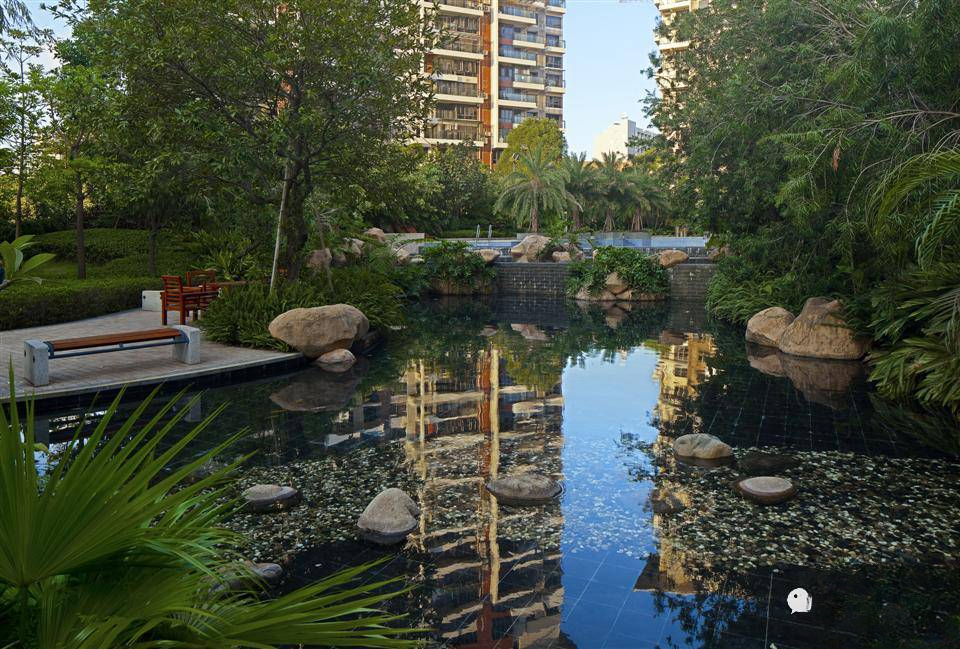
3. Brief introduction to key points of greening construction
1. Digging up the seedlings
When digging, the size of the tree head is determined according to the type of seedlings and the season, which is generally 8-10 times the diameter at breast height. After wrapping with straw ropes, it can be loaded and transported. Larger trees can be wrapped with non-woven fabrics or straw woven bags first and then packed with straw ropes.
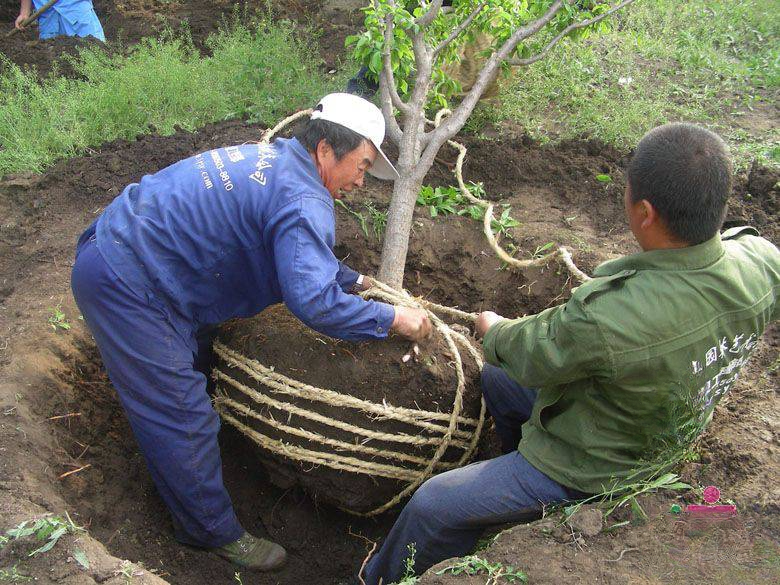
▲Tree heads are being packed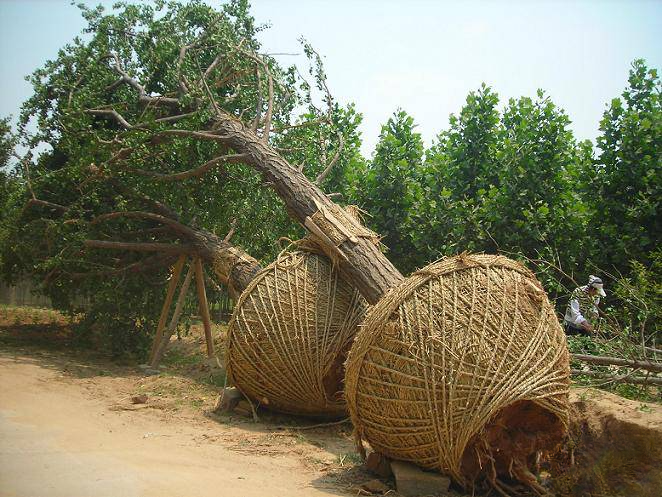
▲After packing the tree heads
2. Hoisting of seedlings
After the tree heads are packed, they can be loaded onto trucks and transported to the construction site. Small trees are usually loaded manually, while large trees require cranes to load. During the lifting process, it is important to protect the trees, especially the trunks, from mechanical damage.
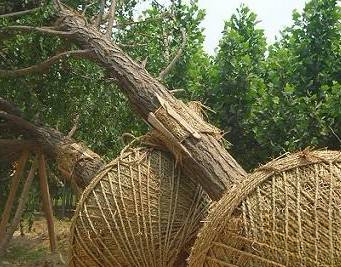
▲Tree protection measures before lifting
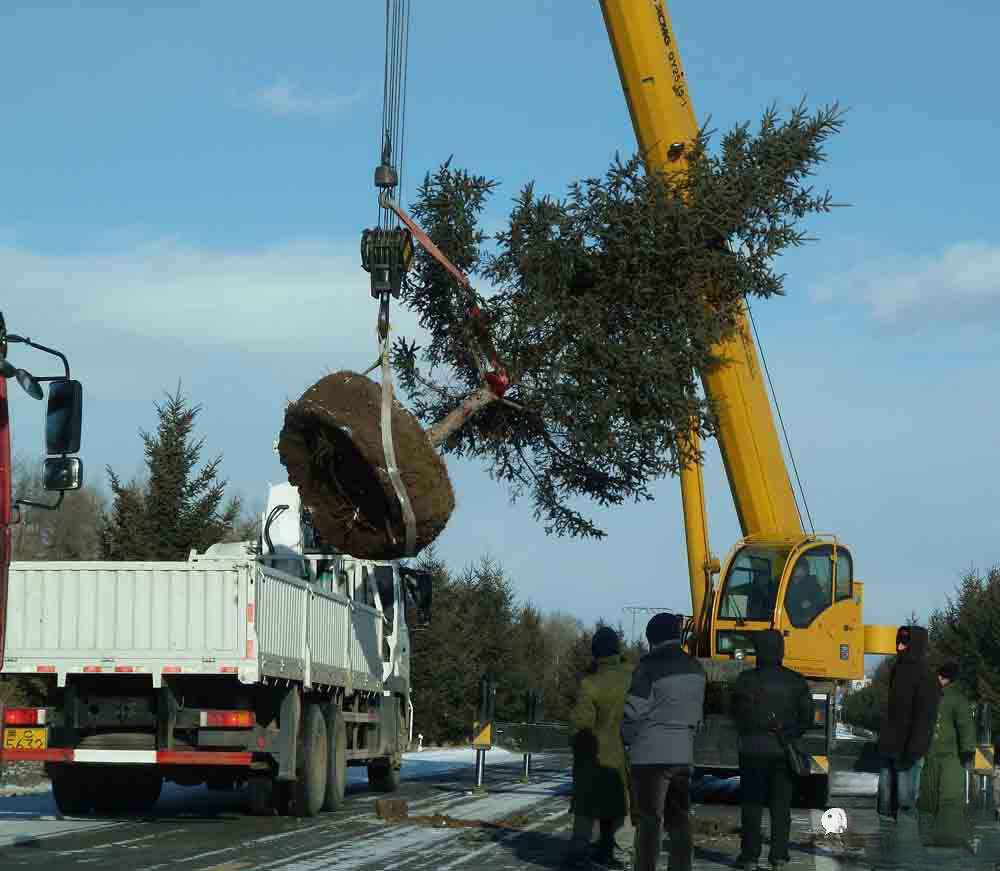
▲Lifting
3. Transportation of seedlings
During transportation, care must still be taken to protect the trees from mechanical damage and dehydration caused by long-distance transportation during off-season planting. Therefore, they need to be firmly fixed. During off-season transportation, spray transpiration inhibitors on the leaves, cover with shade nets, or pick leaves.
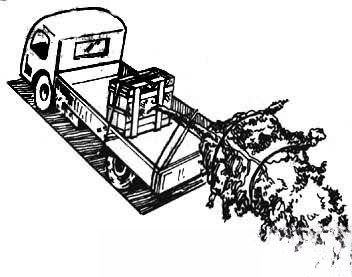
▲Securing trees during transportation
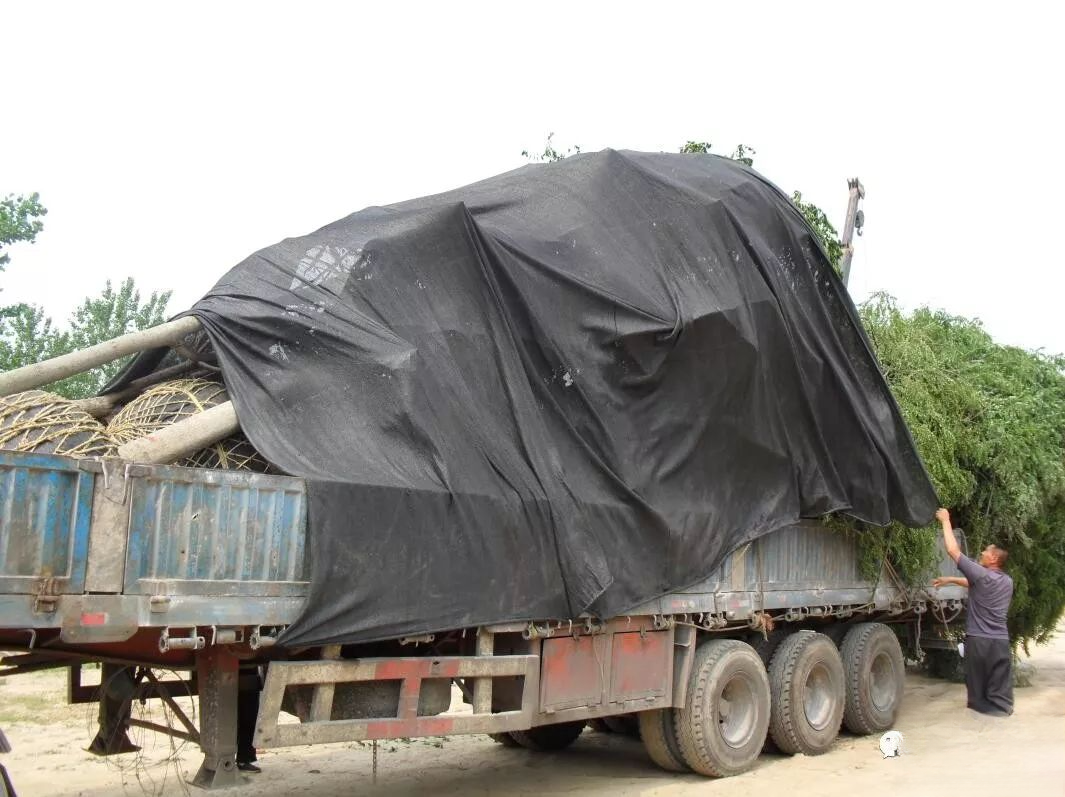
▲Transportation protection
4. Tree pit excavation
The excavation size is required to be 20-40cm larger than the tree head and 20cm deeper than the tree head height. If the soil does not meet the requirements, the excavation size needs to be appropriately increased and the planting soil needs to be replaced.
5. Planting of seedlings
Before the tree top falls into the tree hole, the best viewing side of the seedling should be observed and adjusted to the best viewing direction for people. When planting, the top of the tree top should be 5-20cm above the ground level according to the size of the tree, and the soil should be compacted layer by layer when backfilling. After watering, the tree top will naturally settle to a reasonable height.
6. Support of seedlings
The supports are divided into single-pole supports, double-pole supports, triangular supports, and four-corner supports. Large trees use triangular or four-corner supports; among the four-corner supports, the tic-tac-toe support is the most beautiful.
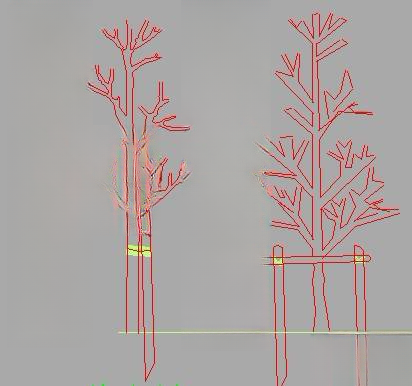
▲Single and double rod support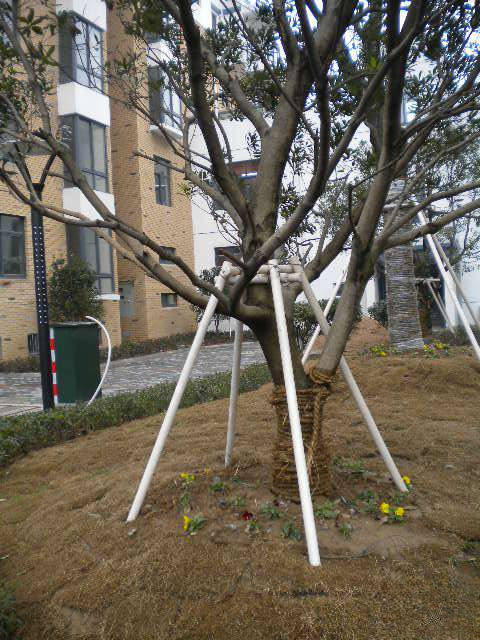
▲Tic-tac-toe support
7. Watering of seedlings
Before watering, you need to build a cofferdam around the trees to prevent water from escaping. There are three types of cofferdams: sinking type, above-ground type (ordinary type), and fish scale type for slopes. When watering, water thoroughly at one time.
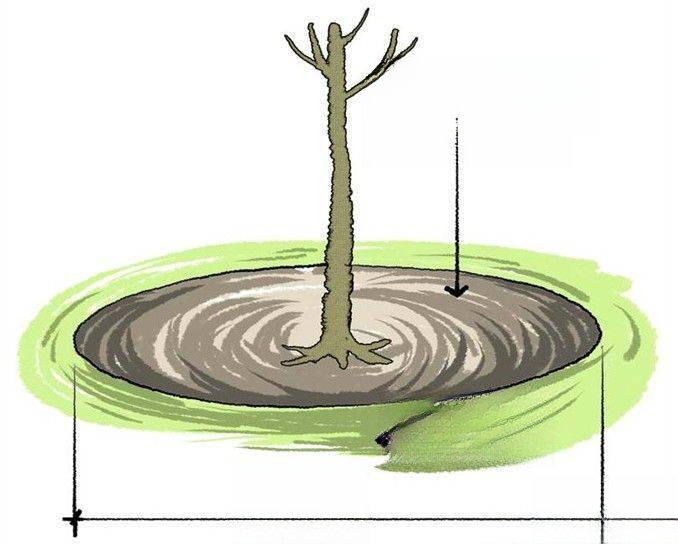
▲Sinking
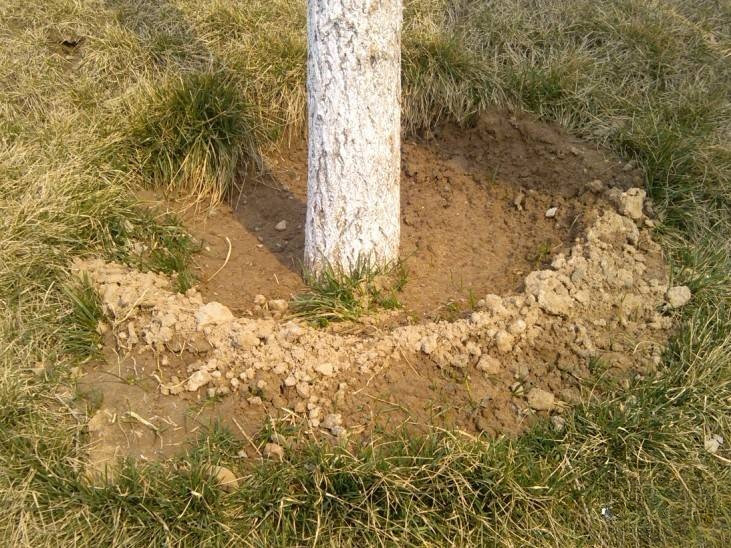
▲Fish scale style
4. Brief analysis of the effect of greening matching - Longhu project
1. Building surroundings
The matching is clearly layered, with four main layers: trees, shrubs, ground cover and grass. Due to the proximity to buildings, the trees are generally not higher than four meters and are restricted by fire regulations, but most of them have good shapes and full crowns and are high-quality seedlings. Shrubs and ground cover are mainly trimmable seedlings. The outermost layer of ground cover is mostly trimmed with trimmable ground cover and matched with neatly trimmed lawns, with obvious traces of artificial modification.
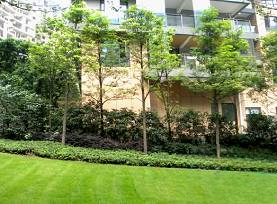
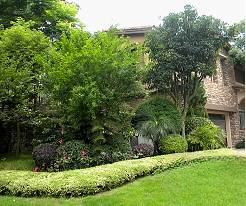
Effect
This type of green space is mainly for close viewing, and most of them are carefully maintained at the unit entrances and on both sides of the owners' home roads. It gives people a refreshing, regular and refined feeling at a close scale, reflecting the quality of the community.
2. Open space in the courtyard
Micro-topography treatment, large areas of lawns, large (5, 6 meters high) or extra-large trees (7, 8 meters high) planted in clusters or alone in the center of the lawn, local groups of green spaces are densely planted with multi-layered trees, shrubs, and ground covers to embellish them, mostly distributed around open green spaces and connected with road hardscapes.
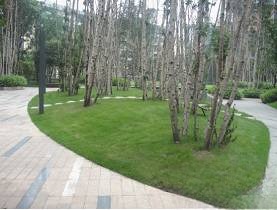
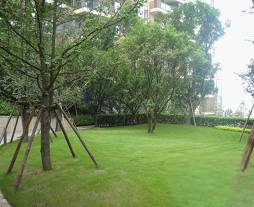
Effect
Large areas of pure green lawns and beautifully shaped trees are simple and elegant. The transparent large-scale space and the distinct levels of near and far views give people a strong visual impact and sense of space.
3. Private space or small green space
It mainly includes small green spaces divided into leisure paths, small activity venues, pavilions and corridors, etc. Most of them are densely planted at a human scale, with many levels of three-dimensional planting. There are five to six levels of large trees (5-8 meters), small trees (3-4 meters), large shrubs (about 2 meters), small shrubs (1-1.5 meters), and ground covers (30-50CM). There are fewer lawns, more green varieties are used, and they are planted at a high density, closely connected with the hard landscape (sites, roads).
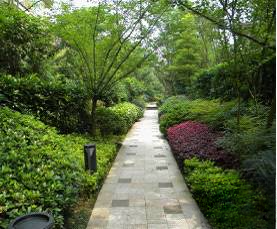
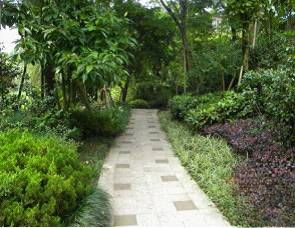
Effect
High-density, multi-layered planting plays a role in blocking the view and dividing the space, allowing people to feel the wide-open, multi-layered space when walking in the community. The human scale, natural combination of multiple species, and lush shade make people feel as if they are in nature. The fragrance of flowers and color effects make people walking in it feel relaxed, soothing, fresh and peaceful. This type of green space focuses more on people's physical and mental feelings.
The information comes from the Internet and is edited by Landscape Micro Review. Please indicate the source when reprinting.
The content is for learning and reference only, all copyrights belong to the original author!
...END...
【Yifeng Project Class】Follow and do real projects
You are serious ,I put my heart into it!
Endless shadowing and learning | Service-oriented teaching guidance
Landscape micro-review | Design knowledge porter. Exclusive for veteran drivers